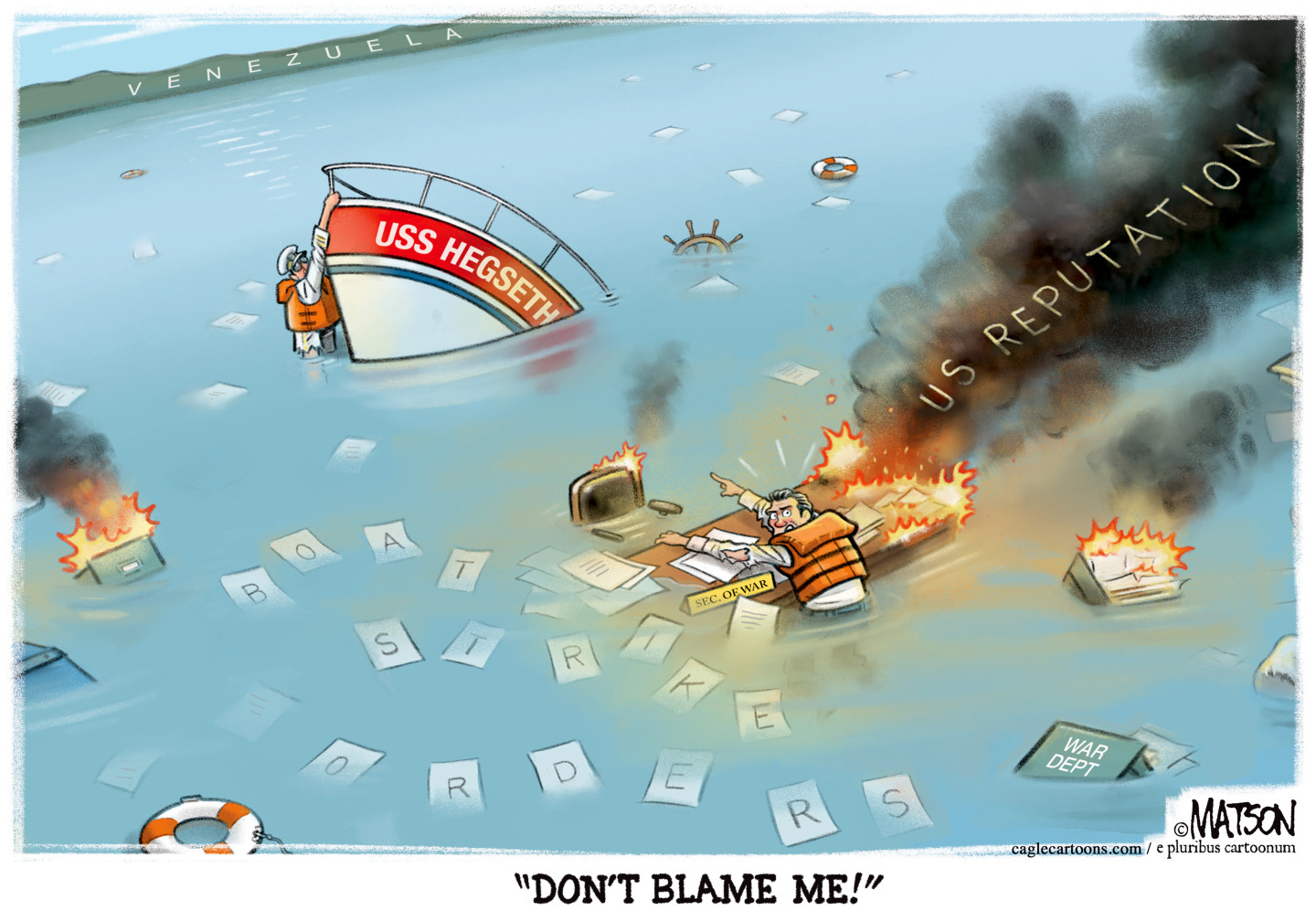A practical guide to NSA reform
President Obama's panel offered up 46 recommendations to curb government spying. What happens now?


On Wednesday, the White House released a 300-page report from a five-expert panel that President Obama appointed to review National Security Agency surveillance in the wake of the Edward Snowden leaks. The report, Liberty and Security in a Changing World, offers up 46 recommendations for Obama to consider and enact.
The proposals were greeted as surprisingly tough and sweeping by privacy advocates and civil-liberties groups. Among the recommendations is that the NSA be made to stop collecting telephone metadata on Americans, leaving that task to phone companies or a private consortium, and only be allowed access to that data with specific court approval. The panel also advises greater oversight from a revamped Foreign Intelligence Surveillance Act (FISA) court, and greater protections for the privacy of foreigners and foreign leaders.
You can read the entire report, or just the 30-page executive summary (starting on page 14), but The New Yorker's Amy Davidson offers this condensed guide for the NSA:
The Week
Escape your echo chamber. Get the facts behind the news, plus analysis from multiple perspectives.

Sign up for The Week's Free Newsletters
From our morning news briefing to a weekly Good News Newsletter, get the best of The Week delivered directly to your inbox.
From our morning news briefing to a weekly Good News Newsletter, get the best of The Week delivered directly to your inbox.
Don't do things just because you can. Tell people what the rules are. Remember that "security" doesn't just mean chasing terrorists — it "refers to a quite different and equally fundamental value," spelled out in the Fourth Amendment: "The right of people to be secure in their persons, houses, papers, and effects, against unreasonable searches and seizures." Stop shutting down debate by muttering about a "balance" that needs to be struck between security and freedom — they are not on opposite sides of the scale. Start thinking about privacy. [New Yorker]
So, what happens now? Obama will take the report on his Christmas vacation to Hawaii and issue his verdict on its recommendations in early January. Some of the changes Obama can implement on his own, while others require congressional action. In the meantimes, federal courts are waging their own battles over government spying. Here's a guide to what's likely to happen next in the push to reform the NSA and other U.S. spy agencies:
The White House route
Obama can reject all the recommendations, approve all of them, or — most likely — sign off on some, modify others, and throw out the rest. A senior administration official tells The New York Times that Obama is "open to many" of the changes; he has already rejected at least one, that the NSA and U.S. Cyber Command be led by separate officials.
The Week's Marc Ambinder outlines the changes he thinks Obama might adopt, including shifting the focus of NSA surveillance from hoovering up foreign intelligence to protecting national security, taking measures to make NSA oversight more credible and transparent, and highlighting the risks of NSA operations in cost-benefit analyses.
A free daily email with the biggest news stories of the day – and the best features from TheWeek.com
At the same time, Obama will certainly face pushback from the intelligence agencies, national-security hawks, and maybe even some advisers: Obama's panel is essentially asking the executive branch to willingly forgo some types of intelligence-gathering, a tough sell since the attacks on 9/11.
Merits of the recommendations aside, "this is a really awkward document for the Obama administration," says Benjamin Wittes at Lawfare. "Really awkward." Having impaneled and empowered this commission, the president can't now ignore its advice, but Obama must know "his job just got a lot harder."
To put the matter bluntly, there is no way the administration will embrace a bunch of these recommendations. And from this day forward, any time the White House and the intelligence community resist these calls for change, the cry will go out that Obama, in doing so, is ignoring the recommendations of his own review panel. And the cry will be right. [Lawfare]
The courts
While the Obama administration was getting its first look at the panel's work, U.S. District Judge Richard Leon was taking the matter into his own hands, ruling the NSA phone-metadata collection probably unconstitutional and illicit. Other judges have ruled the program constitutional, and on Wednesday a FISA court judge rejected a request from a civil liberties group to reconsider an order authorizing the metadata program. The programs fate will likely be decided either by the U.S. Court of Appeals in Washington or the Supreme Court.
Leon will have to persuade higher-ranking judges that the more data we share online, the more privacy protections we're entitled to. It won't be an easy sell: There is ample precedent for the Supreme Court to use against him. But even if Judge Leon's ruling doesn't stand, the courts will still be a very likely path to surveillance reform.
Some of the panel's recommendations Obama can put into effect on his own — like beefing up oversight of the NSA and giving the public more information about agency activities — but larger structural changes require action by Congress. That includes changing the FISA court, revising the Patriot Act and other laws governing data collection, and ending the NSA's mass-collection of telephone metadata.
Despite the urging of lawmakers like Sens. Ron Wyden (D-Ore.) and Rand Paul (R-Ky.), Congress hasn't exactly been champing at the bit to rein in the NSA. But even security stalwarts like Sen. Dianne Feinstein (D-Calif.) have expressed discomfort with some of the NSA practices revealed by the Snowden leaks. Tech companies are also lobbying heavily for changes, arguing the controversy is hurting international sales. If there is broad public pressure, Congress will act.
The American public
The Obama-commissioned NSA reform report will only be as good as the conversation it engenders, says The New Yorker's Davidson. Obama can reject its recommendations, but "he can't ignore it or tell people to look away." Some civil libertarians think the report didn't go far enough, but "with luck and public pressure, it may do more more than its own authors intended."
The politics of NSA surveillance are tricky because the issue "divides both political parties" in sometimes unpredictable ways, says GOP strategist Karl Rove in The Wall Street Journal. "Though there hasn't been much public polling on the issue, it appears to divide Americans in ways that challenge both Democrats and Republicans." Lots of foreigners are enraged at being spied on, but it may not be clear to lawmakers just which way the wind is blowing among the U.S. electorate.
Here's one possible clue: In a new Gallup poll, a record 72 percent of Americans said Big Government is a bigger threat to the future of the U.S. than Big Business (21 percent) or Big Labor (five percent). "The revelation of widespread government monitoring of U.S. internet activity may be a factor in raising Americans' concern about the government," Gallup posits.
Peter has worked as a news and culture writer and editor at The Week since the site's launch in 2008. He covers politics, world affairs, religion and cultural currents. His journalism career began as a copy editor at a financial newswire and has included editorial positions at The New York Times Magazine, Facts on File, and Oregon State University.
-
 5 criminally underrated cartoons about Pete Hegseth’s war crime
5 criminally underrated cartoons about Pete Hegseth’s war crimeCartoon Artists take on USS Hegseth, rats leaving the sinking ship, and more
-
 Can Mike Johnson keep his job?
Can Mike Johnson keep his job?Today's Big Question GOP women come after the House leader
-
 A postapocalyptic trip to Sin City, a peek inside Taylor Swift’s “Eras” tour, and an explicit hockey romance in December TV
A postapocalyptic trip to Sin City, a peek inside Taylor Swift’s “Eras” tour, and an explicit hockey romance in December TVthe week recommends This month’s new television releases include ‘Fallout,’ ‘Taylor Swift: The End Of An Era’ and ‘Heated Rivalry’
-
 Has Zohran Mamdani shown the Democrats how to win again?
Has Zohran Mamdani shown the Democrats how to win again?Today’s Big Question New York City mayoral election touted as victory for left-wing populists but moderate centrist wins elsewhere present more complex path for Democratic Party
-
 Millions turn out for anti-Trump ‘No Kings’ rallies
Millions turn out for anti-Trump ‘No Kings’ ralliesSpeed Read An estimated 7 million people participated, 2 million more than at the first ‘No Kings’ protest in June
-
 Ghislaine Maxwell: angling for a Trump pardon
Ghislaine Maxwell: angling for a Trump pardonTalking Point Convicted sex trafficker's testimony could shed new light on president's links to Jeffrey Epstein
-
 The last words and final moments of 40 presidents
The last words and final moments of 40 presidentsThe Explainer Some are eloquent quotes worthy of the holders of the highest office in the nation, and others... aren't
-
 The JFK files: the truth at last?
The JFK files: the truth at last?In The Spotlight More than 64,000 previously classified documents relating the 1963 assassination of John F. Kennedy have been released by the Trump administration
-
 'Seriously, not literally': how should the world take Donald Trump?
'Seriously, not literally': how should the world take Donald Trump?Today's big question White House rhetoric and reality look likely to become increasingly blurred
-
 Will Trump's 'madman' strategy pay off?
Will Trump's 'madman' strategy pay off?Today's Big Question Incoming US president likes to seem unpredictable but, this time round, world leaders could be wise to his playbook
-
 Democrats vs. Republicans: who are US billionaires backing?
Democrats vs. Republicans: who are US billionaires backing?The Explainer Younger tech titans join 'boys' club throwing money and support' behind President Trump, while older plutocrats quietly rebuke new administration
